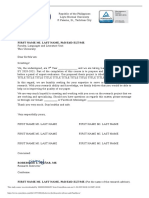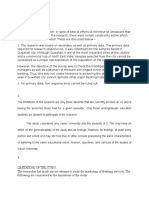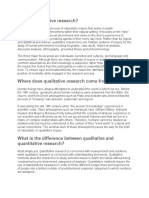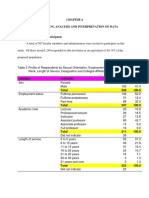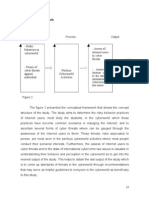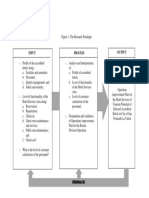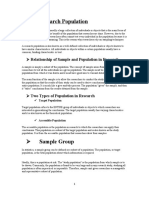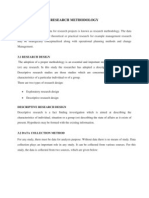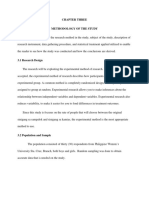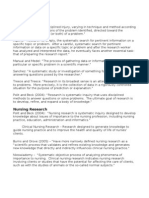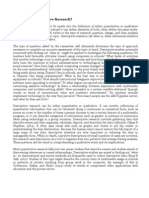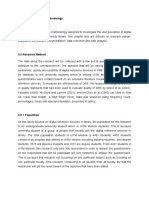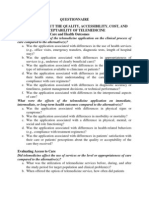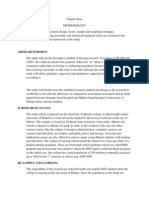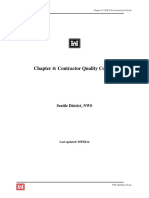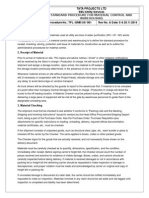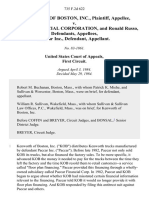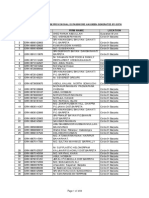RESEARCH PROTOCOL Required Elements TITLE: RESEARCH PLAN A.
Specific Aims
List the broad, long-term objectives and describe concisely and realistically what the specific research described in your proposal is intended to accomplish, and the hypothesis to be tested. Hypothesis:
B.
Background and Significance
Briefly give the background to the present proposal, critically evaluate existing knowledge, and specifically identify the gaps which the project is intended to fill. Cite literature and include a list of references.
C.
Preliminary Studies
Provide an account of the PI/IS's preliminary studies pertinent to the protocol and/or any other information that will help to establish the experience and competence of the PI/IS to pursue the proposed project. The titles and complete references to appropriate publications and manuscripts submitted or accepted for publication may be listed.
D.
Research Design and Methods
Describe the research design and the procedures to be used to accomplish the specific aims of the project. Include the means by which the data will be collected, analyzed, and interpreted. 1. Describe any new methodology and its advantage over existing methodologies. 2. Discuss potential difficulties and limitations of the proposed procedures and alternative approaches to achieve the aims. 3. 4. 5. Provide a tentative sequence or time table for the study. Specify procedures, situations, or materials that may be hazardous to personnel and the precautions to be taken to ensure safety. Provide justification of the sampling procedure and sample size. Gender and Minority Inclusion, it is required that all research involving human subjects and human materials include minorities and women, as well as males and females of all
Page 1 of 5
IRB #
Version
�ages. If one gender and/or minorities are excluded or are inadequately represented in a protocol, particularly in proposed population-based studies, a clear compelling rationale for exclusion or inadequate representation should be provided. The composition of the study population must be described in terms of gender and racial/ethnic group, together with a rationale for its choice (by age distribution, risk factors, incidence/prevalence, etc.) 6. Identify all drugs and devices to be used, if applicable,. If the drug or device is investigational under FDA policy, list the actual IND/IDE number and respective source, supplier, and/or sponsor. If an IND/IDE has been assigned provide the FDA stage status. Note the proposed dosage related information including instructions for administering, adverse effects, compatibility in infusions, and stability. Identify all procedures that will be used for the purpose of this research. If blood is to be drawn, indicate amount to be withdrawn per single withdrawal, and the total amount of blood to be drawn. If transfusions are anticipated, include assurance that the volume of blood removed for research purposes will not necessitate a transfusion.
[Refer to Section 1.5.5]
7.
E.
Study Population (Gender and Minority Inclusions):
1. Describe the characteristics of the subject population, include the anticipated number of normal volunteers, age ranges, sex, ethnic background, and health status. Identify the criteria for inclusion or exclusion (especially women and/or minorities). Explain the rationale for the use of special classes of subjects, such as fetuses, pregnant women, or others who are likely to be vulnerable, especially those whose ability to give voluntary informed consent may be questionable.
F.
Human Subjects (Risks & Benefits)
1. Identify sources of research material obtained from individually identifiable living human subjects in the form of specimens, records or data. Indicate whether the material or data will be obtained specifically for research purposes or whether use will be made of existing specimens, records or data. Subjects with specific diseases or conditions are often identified as potential subjects through some type of record (e.g., medical records, patient charts, registries for cancer cases, surgical or X-ray log books, school records). Controls may come from the same population as the subjects (which is always the case in a randomized clinical trial), be persons with unrelated conditions or be volunteers from the general population. Describe plans for recruitment of subjects and the consent procedures to be followed; including the circumstances under which consent will be sought and obtained, who will seek it, who will give consent, the age range of the individual who will give consent, the nature of the information to be provided to prospective subjects, payment for participation (if applicable), the prospective subjects, and the
2.
IRB #
Version
Page 2 of 5
�method of documenting consent. (State if you are requesting a 'waiver of consent' from the IRB and why.) [Refer to Section 3.0]
G.
Risks and Side Effects:
1. Describe any potential risks--physical, psychological, social, legal, or other and assess their likelihood and seriousness. Describe the alternative treatments and procedures that might be advantageous to the subjects. Describe the procedures for protecting against or minimizing any potential risks, including risks to confidentiality, and assess their likely effectiveness. Discuss provisions for insuring necessary medical or professional intervention in the event of adverse effects to the subjects. Describe the provisions for monitoring the data to insure the safety of subjects. Discuss why the risks to subjects are reasonable in relation to the anticipated benefits to subjects and in relation to the importance of the knowledge that may be reasonably expected to result. List all risks that are more than minimal (no greater probability or magnitude than those ordinarily encountered in daily life or during routine medical tests). Include physical, psychological, social, economic, legal or other risks, where present. Describe the severity and probability of all material risks, and the implications, in understandable terms. Use a table for Common (21-100/100), Occasional (520/100) and Rare (<5/100) risks sorted by Immediate (1-2 days of treatment), Prompt (within 2-3 weeks before next course), Delayed (any later time during treatment) and Late (after completion of treatment) onset wherever possible.
2.
3.
4.
5.
H.
Benefits:
1. 2. The risks must be reasonable in relation to anticipated benefits, if any, to subjects, and to the importance of the knowledge reasonably expected to result. The use of modest compensation for the burdens imposed by the research may be permitted, especially if benefits are minimal, but should be incremental and not conditioned on completion of the entire study. Explain the expected benefits, if any, and their likelihood. If none, say so. You may mention general benefits for science, or for other persons, if any.
3. 4.
I.
Outside Consultants/Collaborators
IRB #
Version
Page 3 of 5
�Attach a letter from the consultant(s) and/or their signature(s) on the Application (Sign-Off) Form confirming their role in the project.
J.
Contractual Agreements
Describe the nature of these collaborations. Attach an appropriate letter from each individual/institution involved confirming the agreement. If the protocol originates at another institution, explain how that institution will be involved and provide the name and department of the Institutional Sponsor. The assigned PI/IS must be a faculty/staff member of that institution.
K.
Costs To Subjects:
1. The Research Plan and the consent documents must describe the costs to such compensation plans in detail, including the provision of free care or medicines related to the study. Example: Children's Hospital will give you the medicine used in this study for free. You will not be charged for anything else we do that is part of the study. You will still have to pay for any medical care that is not part of the study.
L.
Conflicts Of Interest:
1. Describe any financial or other conflicts of interest as indicated. Any interests of the investigators or provider institutions in the outcome of the research, the study product, or the sponsoring entities, any support received by the researchers or provider institutions from same in excess of $10,000 per year, and any other relationship to the sponsor or the research that could be material to any subject. Where such interests exist, describe the disclosures that will be made to subjects in the consent process and consent documents and discuss the factors considered in selecting the appropriate disclosures. Consult 2.3 of the Manual for a discussion of materiality and appropriate disclosure to subjects, including disclosure of sponsor identity and source of funding where potentially material to subjects. Review the Financial Interest Disclosure form submitted to the Office of Sponsored Programs to ensure that it is current and consistent with the Application disclosure.
2.
3.
M.
Confidentiality:
Include appropriate provisions to protect the privacy of subjects and maintain the confidentiality of data, and include safeguards to protect the rights and welfare of vulnerable subjects.
N.
Subject Compensation:
IRB #
Version
Page 4 of 5
�The Research Plan must describe such compensation plans in detail, including the provision of free care or medicines related to the study.
O.
Facilities and Equipment
Describe the facilities and equipment to be used. Indicate the extent to which these facilities and equipment are available or will be obtained for the project.
P.
References & Literature Cited
Compile a judicious list of relevant literature citations. Each literature citation must include the title, names of authors, book or journal, volume number, page numbers, and year of publication.
Q.
Appendix
Attach the letters of confirmation from collaborating institutions, consultants, research documents (e.g., questionnaires, scales, tables, charts, diagrams, manufacturers brochures, etc.) in this section. PLEASE REMEMBER TO PAGE NUMBER THE ENTIRE DOCUMENT
IRB #
Version
Page 5 of 5







